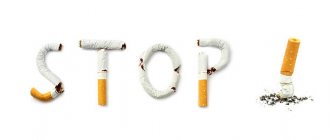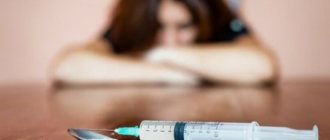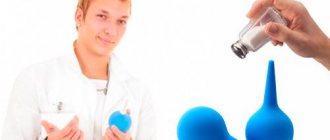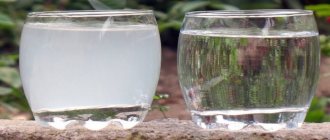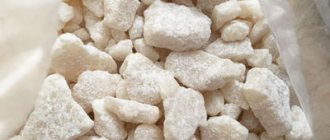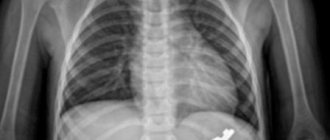The accumulation of excess fluid in the body is a consequence of the protective mechanism of self-regulation, leading to significant weight gain. Because of this, swelling appears, the face swells, and health worsens. If the swelling is excessively severe and occurs regularly, you should consult a doctor and undergo an examination. This symptom may indicate kidney disease, cardiovascular disease, or hormonal imbalance, which requires treatment.
Swelling can also occur due to poor nutrition and drinking regimen, alcohol consumption, and lack of physical activity. For those who are trying to lose weight, it is especially important to know how to remove excess fluid from the body, what means contribute to this, since by losing excess water you can achieve impressive results - literally lose up to 3-4 kilograms in just a couple of days.
Where does fluid accumulate in the body?
The lymphatic system is responsible for removing excess fluid, but in some cases it cannot function normally, and then water accumulates in the tissues.
To understand how to remove water from the body, you need to know the norm of its content.
The first type of classification includes the causes of fluid accumulation due to certain pathologies, such as:
- liver and kidney diseases;
- diseases of the cardiovascular system;
- disturbances in the activity of the urinary system;
- disruptions in blood circulation;
- allergic reactions;
- thyroid diseases;
- hormonal imbalance.
For example, renal failure and cirrhosis of the liver can cause retention of excess fluid in the pleural and abdominal cavity. When vascular function, blood circulation or cardiac activity is impaired, swelling of the limbs and lungs occurs.
Hormonal imbalance can be caused by specific medications, pregnancy or the onset of menstruation.
Physiological reasons for the accumulation of fluid in the body include:
- alcohol abuse;
- smoking;
- unbalanced diet;
- excess salt in consumed dishes;
- avitaminosis;
- binge eating;
- sleep disorders and insomnia;
- physical inactivity;
- emotional tension and stress;
- chronic fatigue.
Overhydration is often caused by an unbalanced diet. Sausages, fast food, smoked foods, overly sweet desserts, sauces, as well as coffee, strong tea and soda not only retain water, but also lead to edema.
The latter are nothing more than water reserves, which are formed by the body’s self-regulatory system, necessary to dilute and reduce the effect of toxins contained in harmful products.
Often, fluid retention is also caused by alcohol, since the liver simply cannot cope with the utilization of alcohol. Overeating provokes the release of insulin, which, in turn, negatively affects the entire metabolic process, retaining both sodium and water.
Additional factors include:
- hot and humid weather;
- too abrupt “entry” into the diet;
- starvation;
- uncomfortable high-heeled shoes;
- tight and tight-fitting clothes.
Oddly enough, drinking too much water throughout the day can lead to overhydration. For example, athletes who drink more than 3.5-4 liters during training often experience swelling of the extremities.
Don't miss the most popular article in the section:
Laser hair removal on the face and body - how it is carried out, effectiveness, before and after photos, contraindications.
Watermelon diet
In the summer, it is worth paying attention to such a berry as watermelon. Thanks to its composition, it helps to activate the kidneys. This in turn leads to the fact that excess fluid and toxins will begin to be eliminated faster.
Fiber, which watermelon is rich in, gives you a feeling of fullness for a long time. Therefore, it is quite possible to stay on such a diet for a couple of days without harm to health or the risk of starvation. If there is a shortage of food, then it is permissible to introduce rye bread into the diet.
You cannot stick to a watermelon diet for a long time, since the body needs proteins, fats, and carbohydrates. Therefore, a couple of days is enough to lose those hated pounds. Then you just need to maintain the weight. For example, using the same water diet.
Causes of water retention in the body
There are several reasons leading to excess accumulation of water in the human body.
- Hereditary predisposition plays a major role in the accumulation of fluid.
- Failure to maintain the water-salt balance has a negative impact on the functioning of the lymphatic system.
- Often this phenomenon occurs in people who have bad habits, eat a lot of junk food and lead a sedentary lifestyle.
- Impaired outflow of tissue fluid can be a consequence of injury, heavy physical labor or excessive sports.
- The causes of fluid retention are hormonal disorders caused by diseases of the endocrine system.
- Allergic reactions and inflammatory processes can provoke the accumulation of lymphatic fluid.
- Improper, uncontrolled use of diuretics can lead to fluid retention in tissues and intertissue spaces.
- Sometimes stress, anxiety, and anxiety can act as a provoking factor.
Recognizing the disease by the type of edema
According to statistics, every fifth patient consults a doctor with complaints of swelling. Swelling in the body indicates that you have a lack, not an excess, of water in the body, and an imbalance has begun, which is worth paying special attention to. By the appearance of edema, you can recognize the onset of the disease and prevent it in time. So, let's look at them:
- If you notice heaviness in the legs, dilated veins, constant swelling of the legs, but the leg does not turn red, and the skin has a bluish tint when touched, this indicates the development of varicose veins. Also signs are heaviness in the legs and dilated veins;
- swelling in the ankles indicates the possible development of heart failure. Shortness of breath and rapid heartbeat are a precursor to edema.
- swollen eyelids, bags under the eyes - this is a violation of the kidneys. Swelling is “floating”, soft, changing its location with changes in body position.
- the endocrine system can signal disturbances by swelling of the tongue, shoulders, loss of strength, constant fatigue, and weight gain.
However, don't panic if you experience swelling on an irregular basis. The cause may be ordinary fatigue or heat. While resting, try to raise your legs up, above the level of your face, and lie in this position for 10-15 minutes.
Consequences of excess water
Overhydration is dangerous due to its negative consequences for human tissues and organs.
So its most dangerous “results” are:
- headaches and frequent migraines due to increased intracranial pressure;
- increased blood pressure as a result of disturbances in the functioning of the cardiovascular system;
- increased sweating (hyperhidrosis);
- swelling of various parts of the body (most often the limbs);
- disruptions in the functioning of the digestive system and gastrointestinal tract.
Pharmacy products
Any diuretic pharmaceutical drugs, like choleretic drugs, can only be prescribed by a doctor and only after a complete and detailed examination. And they are used only for serious problems, such as high blood pressure or kidney failure.
Pharmacies sell various herbal medicinal preparations. They are very effective and not so dangerous. But still, they should be taken on the advice of a specialist. In addition, it is important to follow the dosage indicated in the instructions for use.
How to determine the presence of excess water?
How to remove water from the body for weight loss must be decided after determining the degree of hyperhydration in the body.
The following signs support this phenomenon:
- swelling, primarily in the area of the face and limbs;
- changes in the daily volume and color of urine (frequent visits to the toilet);
- headache;
- nausea, sometimes accompanied by vomiting;
- pale skin;
- sudden weight gain;
- decreased tone, weakness of muscle tissue;
- periodic attacks of tachycardia;
- fatigue, causeless irritability.
With overhydration, special behavioral reflexes are often developed. A person who is constantly thirsty unconsciously begins to carry supplies of water with him. As a result, the load on the urinary system increases, the color of urine changes, from normal, slightly yellowish to almost colorless, indicating a deficiency of important components in the body.
With a severe degree of overhydration, not only nausea and vomiting are observed, but also indigestion followed by diarrhea. Such symptoms are similar to those of classic intoxication. Excess fluid also leads to increased intracranial pressure, which results in throbbing pain syndrome and frequent migraines.
Overhydration is often characterized by sodium deficiency. This element is responsible, among other things, for the color of the skin. Its deficiency can be determined by the characteristic pallor of the lips or hands. The accumulation of excess fluid also leads to a decrease in muscle tone. As a result, a person feels numbness, sometimes leading to cramps in the limbs.
There are several ways to determine excess fluid in the body:
- Press your finger on an area of the skin (preferably a limb) and see how quickly it recovers. If the resulting hole is not restored within a few seconds, this is a clear signal of disturbances in the functioning of the lymphatic system.
- Purchase a special analyzer scale that determines water levels in the body, and then compare this measure with the norm.
- Undergo a full examination at the clinic.
Violation of the outflow of water has a number of signs that depend on the degree of neglect of this process. The presence of a pathological condition is indicated by the following symptoms and external manifestations:
- rapid weight gain;
- swelling of the eyelids and face;
- swelling of the lower and upper extremities;
- increased sweating, including during sleep;
- frequent urination;
- pale skin;
- dyspnea;
- fast fatiguability;
- leg cramps.
Fluid retention spoils a person’s appearance (leads to edema, weight gain), which provokes a lot of complexes and psychological disorders. The pathological phenomenon negatively affects the entire body, since it disrupts the functionality and structure of tissues and organs.
If this body signal is left without proper attention, then such a violation can subsequently lead to much more serious conditions. In cases where water is retained due to any disease, then inaction or self-medication threatens to move it into an advanced stage.
Causes of edema
The first thing to remember when this disorder appears is that it may be a symptom of a serious illness. And it arises due to problems with the removal of waste fluid from the intercellular space. Normally, water is not retained in the tissues; it is excreted through the capillaries and transported further through the veins. The correct course of this process depends on several factors: water-salt balance, the condition of the walls of blood vessels, as well as venous pressure. And if there are difficulties with any of these parameters, swelling occurs.
There are relatively safe reasons for the appearance of such a deviation:
- Excessive drinking before bed. In this case, due to the slower functioning of all systems, the body simply does not have time to completely process and remove what has been received.
- Insufficient fluid intake or excessive use of diuretics. If the body does not receive the required amount of clean water, it can begin to accumulate it in the intercellular space.
- Sleep disturbance. And too much sleep, chronic lack of sleep, an uncomfortable pillow or position often lead to swelling.
- Alcohol abuse. It increases the feeling of thirst and at the same time disrupts healthy microcirculation.
- Poor nutrition - especially eating large amounts of salty food - leads to changes in the water-salt balance.
- Excessive unusual physical activity or sedentary lifestyle.
- Climate influence. In extreme heat, natural mechanisms that protect against overheating sometimes lead to improper circulation.
- Taking medications, including hormonal drugs, can lead to similar complications. They also arise due to magnesium deficiency in the body.
- In women, poor circulation sometimes depends on the menstrual cycle.
Swelling, for example, of the legs often occurs as a result of compression of the veins in the pelvic area. This happens due to flat feet, uncomfortable sitting posture, or in the last trimester of pregnancy.
The problem in all the cases described above is temporary, and when the harmful factor is removed, the body’s condition quickly returns to normal. Although even in the case of such innocent reasons, if a problem arises, it is worth thinking about changing your lifestyle and diet.
But there are also more serious reasons, and if they exist, any measures to get rid of excess fluid should be carried out after consulting a doctor:
- Pathologies of the heart and cardiovascular system. In this case, symmetrical dense swelling develops gradually from the legs and lower abdomen. Accompanied by shortness of breath, tachycardia, cyanosis of the lips, etc.
- Kidney diseases. Expressed in morning swelling of the face and eyelids. By evening the swelling subsides.
- Thyroid diseases. They manifest themselves in the form of swollen legs in the evening, shortness of breath and rapid heartbeat.
- Disorders of the lymphatic and venous system (varicose veins, thrombophlebitis, etc.). For example, with varicose veins of the legs, the following symptoms are observed: heaviness in the legs, dilated veins, frequent cramps, itching.
- Allergy. The violation is local in nature. The area of swelling is elastic to the touch, the skin in its area is pale. Accompanied by anxiety and difficulty breathing, it can develop into Quincke's edema.
- Diabetes. Causes swelling of the legs, pain due to any irritants, slow healing of injuries, etc.
- And other diseases.
When a problem with fluid excretion occurs regularly, or its consequences are asymmetrical or unusual, you should contact a specialist.
Contraindications
Before getting rid of excess fluid, it is necessary to take into account a number of contraindications that prevent you from solving this problem on your own.
These include:
- heart failure;
- diabetes;
- lupus erythematosus;
- hypovitaminosis;
- pancreatitis and gout;
- post-infarction state;
- vascular stenosis;
- hypotension;
- compensated and uncompensated alkalosis.
It is precisely because of the presence of many contraindications that it is necessary to combat overhydration under the supervision of a specialist.
Before getting rid of excess fluid at home, it is necessary to take into account a number of contraindications that prevent you from solving this problem on your own.
These include:
- hypovitaminosis;
- pancreatitis and gout;
- post-infarction state;
- heart failure;
- diabetes;
- lupus erythematosus;
- vascular stenosis;
- hypotension;
- compensated and uncompensated alkalosis.
Additional methods
Regular visits to the bathhouse or sauna will help get rid of excess water in the body.
If you go there about once a week, you can notice a positive result pretty quickly. The general condition of the body will improve, the body will look more toned, and the skin will be smooth and healthy. This result is achieved due to the fact that excess fluid and toxins are released through sweating.
In this regard, the beneficial effect of the bath is very great. If for some reason it is not possible to visit the sauna, then you can take a hot bath at home, and then lie under a blanket for an hour. This greenhouse effect also perfectly cleanses the body. Physical activity is also necessary, because it resists stagnation of water.
Foods that remove excess water from the body
How to remove water from the body for weight loss at home and what needs to be done for this - these are the questions that patients with this problem often ask.
There are a number of simple measures:
- Identifying the causes of overhydration.
- Normalization of diet and organization of balanced nutrition.
- Increasing physical activity, organizing sports activities.
- Rejection of bad habits.
- Regular fasting days.
Having determined the cause of water retention, you can choose the appropriate treatment method.
Depending on the source of overhydration, therapy can be gentle or more effective. There are drug treatments and folk recipes with natural ingredients.
There are a number of products that perfectly remove water from the body and, at the same time, are a storehouse of useful vitamins.
The simplest and most effective products include:
- lemon – reduces blood pressure, removes excess fluid, is an additional element of therapy for bladder infections;
- celery – has a diuretic property, helps the digestion process, is very nutritious;
- beets – in addition to their diuretic properties, they are an excellent source of antioxidants, containing betelain;
- ginger is an excellent “cleanser” that removes all toxins, normalizes blood circulation and gets rid of excess water. In addition, ginger root is good at soothing joint pain due to arthrosis;
- zucchini - also has a diuretic effect, provided that salt is not used when preparing it. It is considered a good means of preventing cancer and heart attacks;
- cranberry juice - good for the kidneys and has a diuretic effect, but only in fresh form;
- parsley is a source of powerful antioxidants that has an equally strong diuretic effect;
- oats are not only one of the healthiest breakfasts in the form of oatmeal, but also a product that absorbs excess liquid and cholesterol;
- tomato - in its raw form not only has an effect on the urinary system, but is also a well-known preventive product against cancer and heart attack;
- Cucumber is a common ingredient in diets and detox recipes. This vegetable not only has a positive effect on the urinary tract, but also prevents the development of diabetes and oncology;
- watermelon has long been known for its diuretic effect. However, in addition to this, it contains a large amount of glucose, which is not at all beneficial for the body;
- carrots - in addition to the well-known effect of vision correction, this vegetable is also famous for its diuretic properties.
It would not be amiss to mention coffee and other caffeinated drinks, which are guaranteed to affect the number of trips to the toilet.
It is important to understand that water retention is not a disease, but only a consequence of some pathological processes in the body. You can get rid of it at home using various therapeutic methods. The main thing is that before using any method of eliminating water from the body, you should visit a doctor and find out the cause of the pathological condition.
Next, we will consider the main ways to normalize the water balance in tissues.
The nutritional rules that must be followed in the presence of excess water play a key role and are a mandatory method of comprehensive home therapy. Experts say that a correct diet when the amount of lymphatic fluid deviates from the norm towards an increase is the key to getting rid of it as quickly as possible. In addition, consistent adherence to the basic principles of a healthy diet can reduce the likelihood of this condition occurring.
- The first thing you need to do at home to lose weight is to establish a drinking regime and reduce salt intake, as it contributes to the development of edema syndrome.
- It is necessary to exclude from your diet all unnatural products that contain chemicals that are harmful to health. You should also avoid spicy, smoked, fatty and fried foods. Foods high in sugar should be avoided. Do not overuse coffee, or even better, replace it with green tea. A therapeutic diet for lymphatic stagnation involves a complete abstinence from alcohol-containing drinks.
- The menu must include foods high in potassium and magnesium. In the morning, give preference to foods that are complex carbohydrates.
- Include vegetables and fruits in your diet that have a diuretic effect. They not only remove accumulated fluid, but also saturate the cells with useful substances. Eat more greens, cereals, fish and dairy products.
- It is also important to remember that you need to observe meal times. You need to have dinner at least 3 hours before bedtime.
Foods and diets that help eliminate excess water
To remove excess fluid, it is recommended to eat foods that are high in potassium and fiber. Wholemeal baked goods, unprocessed rice, Hercules, greens, legumes, zucchini, apples, cabbage, pumpkin, eggplant are useful. Liquid-removing foods also include watermelons, juices (birch, cabbage, beetroot), fresh and dried fruits, berries, and nuts. For drinking, it is better to prefer clean water, herbal infusions and green leaf tea.
A diuretic diet with milk tea will help remove toxins from the body and normalize weight. Its essence is as follows.
What not to do to remove excess fluid from the body
Many people want to quickly lose weight by quickly removing fluid from the body, without thinking about the possible harm to their health.
What you shouldn’t do so as not to bitterly regret it later:
- engage in self-diagnosis and treatment, especially when it comes to diuretics and other types of medications;
- get carried away with teas for weight loss, the action of which is often based only on the diuretic effect;
- introduce restrictions on drinking, especially clean water. The result will be exactly the opposite.
There are many ways to remove excess water from the body to lose weight. They have only one thing in common - before you start using them, you need to get all the advice from a specialist.
Article design: Olga Pankevich
Physical exercises to quickly remove fluid
Those people who spend most of their time in a sitting position need to take short breaks sometimes. During a break, it is advisable to walk in the fresh air for 15 minutes. And if this is not possible, then you should perform several exercises:
- Squats 10-15 times.
- Bend to the sides 40 times.
- Mill 40 times.
- Circular movements of the head 20 times.
This warm-up will wake up the body and make it work. It is not necessary to do all the exercises in one break; you can do 1 exercise each break. Breaks should be taken every 2 hours. Warm-up is no longer aimed at removing fluid, but at preventing its accumulation.
Foods that remove excess water from the body
A nutritionist can tell you how to remove water from the body for weight loss. Products that affect fluid retention in the body usually contain large amounts of sodium.
The best known source is sodium chloride or table salt. This compound can be found in almost any food item from celery to seafood. In most cases, its natural amount is safe, but when cooking, cooks often oversaturate dishes with it. As a result, the norm increases by 2-3 times, forcing the body to fight the consequences.
Sodium is highest in processed foods, such as:
- sausage products;
- hard cheeses;
- canned meat and fish;
- fast food;
- sauces (mayonnaise, ketchup, soy sauce);
- marinades (olives, capers);
- canned vegetables;
- snacks (chips, crackers).
In addition to table salt, they often contain additional forms of sodium that enhance the taste, appearance and preservation of products: monosodium glutamate, sodium nitrite, sodium benzoate and sodium bicarbonate.
Another group responsible for fluid retention in the body is foods with a high glycemic index.
These include the sweets so beloved by many:
- cornflakes;
- baking;
- waffles,
- dried fruits;
- cookie;
- cakes and pastries.
You should also avoid drinking drinks such as soda or non-alcoholic beer. Alcohol in this case is generally contraindicated. Despite its diuretic properties, it disrupts the water-salt balance and becomes a source of toxins, the removal of which requires a large amount of water accumulated in tissue cells.
Nutrition correction
One of the main conditions for maintaining water-salt balance in the body is proper nutrition, the inclusion in the diet of foods that help get rid of problems with metabolic reactions, and the exclusion of junk food.
Nutritionists advise steaming, boiling or stewing dishes. You should avoid fatty, fried and spicy foods that cause thirst.
We exclude foods with a high glycemic index and nitrate content from the diet:
- alcohol, sweet carbonated drinks, coffee;
- mayonnaise, soy sauce, ketchup;
- fatty meats, hard cheeses, sausages, semi-finished products;
- fast food, crackers, chips;
- factory-made and home-made canned food;
- confectionery, baked goods.
If health allows, we do fasting days weekly. To do this, use the following products and dishes:
- Oatmeal is prepared without salt using water. It is allowed to add honey and dried fruits. You can eat in unlimited quantities. The fiber contained in cereals perfectly cleanses the body, removes “bad” cholesterol, improves the functioning of the digestive tract, and starts metabolic processes. Porridge made from oat flakes or groats is a dietary dish.
- Pumpkin juice improves blood composition, heart function, and blood vessels. Produces a diuretic effect, accelerates the removal of waste products.
- Low-fat kefir or yogurt is consumed in the amount of one and a half liters. In addition to removing water, these products supply calcium to tissues, restore normal intestinal microflora, and strengthen immune defense.
On fasting days you need to drink 2 liters of clean water, do not use seasonings or spices.
Eat at the same time, be sure to have breakfast, and don’t overeat at night. Introduce fresh fermented milk products, vegetables and fruits into your diet, except those containing large amounts of fructose. These are bananas, dates, grapes.
We advise you to read: Fasting day on the water: how to spend it correctly
Products that remove water from the body, recommended for inclusion in the diet if you are prone to edema:
- Ginger. The fresh root has a greater diuretic effect. Ginger is a supplier of zinc and calcium, removes toxins, and reduces appetite. Ginger water is used as a fat burner.
- Cranberry. Berry juice removes toxins, excess water, and is involved in the complex treatment of the genitourinary system.
- Lemon. Restores acid-base balance, breaks down fats, strengthens blood vessels. It has antiseptic and anti-inflammatory characteristics. Prevents colds.
- Rice. Unpeeled rice is used to absorb water from the intercellular space. The more familiar, refined grain removes excess salt, which prevents the release of liquid.
- Watermelon. In addition to diuretic properties, it has antioxidant properties. It is not recommended to get carried away with the product, as it contains a large amount of sugars.
- Beet. The vegetable itself and the juice from it promote weight loss, produce a laxative effect, gently cleanse the intestines, normalize cholesterol levels, and increase hemoglobin.
- Tomatoes. Used to remove liquid exclusively fresh or in the form of juice. They contain zinc and magnesium, which has a beneficial effect on the functioning of the heart, blood vessels, and central nervous system.
- Eggplant. The water remaining after cooking the vegetable has the greatest diuretic effect. After taking it, the body is detoxified and kidney function is normalized.
- Cabbage. Quickly saturates with low calorie content, relieves swelling, and has a positive effect on intestinal motility.
- Cucumbers. Rich in a mineral complex that is useful for people with kidney, heart and vascular diseases.
Milk milk diet
How to remove water from the body to lose weight, what diet you should follow, and how safe it is - these are questions that concern many women, especially in preparation for the beach season.
Many experts recommend the kefir diet as one of the most healthy and gentle dietary regimens. Kefir is a unique product. It not only has a diuretic effect (therefore, you should not use diuretics and laxatives during the diet), but also contains many useful elements that contribute to the healing processes of the body.
When starting a kefir diet, you should follow a number of rules:
- drink moderate amounts of fluid;
- drink only one-day kefir;
- after finishing the diet, take a course of probiotics.
There are several types of kefir diet. The most common in terms of duration are diets for 3, 5 and 7 days. You can choose the optimal regimen based on your lifestyle, goals, taste preferences and time of year.
A three-day kefir diet involves consuming 1.5 liters of fresh kefir per day. In this case, all other foods are excluded from the diet. This is one of the most strict, but at the same time, effective diets, since during this period you can lose up to 3 kg of your initial weight.
The kefir diet, designed for 5 days, allows meals every 2 hours with the introduction of additional products to the menu, such as:
- carrots (2 pieces);
- 0.2 kg lean meat;
- apple (2 pieces);
- boiled egg;
- prunes;
- 250 grams of one-day kefir.
This is an approximate calculation of products for 1 person for 1 day. As an option, it is possible to replace all products except kefir with fruits (excluding sweet grapes and bananas).
The weekly kefir diet is more varied. The main condition is that the final meal should take place no later than 18.00.
Here's what it looks like:
- 1 day. 5 boiled “in their jacket” potatoes and 0.6 liters of kefir;
- Day 2. 0.2 kg sour cream 0.6 l kefir;
- Day 3. 0.6 l of cottage cheese and 0.6 l of kefir;
- Day 4 0.5 kg of boiled chicken meat and the same amount of fresh kefir;
- Day 5 1 kg of apples or equivalent 0.3 kg of prunes or 0.5 kg of carrots 0.6 l of kefir;
- Day 6 Only 1.2 liters of kefir;
- Day 7 1 liter of still mineral water.
Another diet option is losing weight with milk tea. This product not only quenches thirst remarkably, but also dulls the feeling of hunger due to the interaction of milk fat and tannin contained in black and green tea.
The drink is prepared as follows:
- pour 1 liter of milk (low-fat) into a thick-bottomed pan, which is brought to a boil;
- the milk is slightly cooled, after which dry tea leaves (3-4 teaspoons) are added to it;
- Cover the pan with a lid and infuse the drink for 30-40 minutes.
It is necessary to understand that milk tea will not replace regular drinking water, so those losing weight need to drink an additional 1-1.5 liters of water per day. Along with the drink in limited quantities, the diet includes: oatmeal with water, raw vegetables, boiled chicken fillet, vegetable soups without salt.
Products that can speed up the process of fluid removal
Among all food products, the following have the maximum ability to retain fluid in the body:
- Oils and fats.
- Marinated, smoked and salted foods.
As you can see, this list includes a fairly large number of modern products produced by the modern food industry - sausages, grilled chicken, cheeses, canned food, sauces, ham, etc. If you limit their consumption by at least 15–20 percent or If you do one fasting day a week, the body will stop actively storing fluid.
What products help recycle excess water? First of all, this category includes foods rich in plant fibers and potassium - fruits, herbs, vegetables, birch sap, green tea, nuts, etc. All foods that accelerate the process of removing fluid from the body will help you fight edema.
Fasting days
The use of fasting days is accompanied by compliance with a number of rules that guarantee safe and effective healing of the body:
- Fasting days should not be arranged more often than 1-2 times every 7-8 days.
- The calorie content of the diet should be 2 times lower than the usual norm.
- The frequency of fasting days (only on Wednesdays or Saturdays) will help reduce the stress load on the body.
- During fasting days, physical activity (sports) should be kept to a minimum.
- You need to exit fasting days carefully without overeating.
If everything is more or less clear with the kefir diet (it is similar to the 3-day diet, only with a shorter period), then with the apple diet the main product consumed during the day is apples, approximately 1-1.5 kg. However, such unloading is not recommended in the presence of gastrointestinal diseases.
A one-day cereal diet allows you to eat one type of cereal throughout the day. Most often it is buckwheat. In the evening, pour 2 glasses of boiling water over it and wrap it well, without boiling or salting it. Additionally, you are allowed to drink still mineral water.
For the rice diet, 150 grams of the dry product is boiled, which is then divided into 3 servings. It is permissible to add cinnamon to your morning porridge, eat an apple for lunch, and carrots for dinner.
A protein diet often consists of two types of diet:
- 400 grams of cottage cheese 1 liter of kefir 200 grams of natural yogurt;
- 400 g boiled chicken 800 g raw vegetables 200 g kefir 2 liters of water.
Kefir should be 1%, and cottage cheese should have a fat content of no more than 0.5%. You should also not salt foods.
Precautionary measures
A healthy lifestyle and proper nutrition have no contraindications. But fasting days and diets, especially those involving the consumption of one product, are possible only after consulting a nutritionist. This is especially true for women when they are expecting a child.
You cannot take pharmaceutical diuretics or traditional medicine without indications or a doctor’s prescription. Medicinal herbs are not as harmless as they seem. Indiscriminate use of pills and drugs leads to dehydration and loss of minerals involved in important biochemical reactions.
Also, you should not drink special teas that remove water. The short-term effect of these products threatens the loss of nutrients.
There are direct contraindications to visiting baths and saunas, which are recommended for removing water:
- heart disease, vascular diseases;
- mental disorders;
- asthma, tuberculosis;
- diabetes;
- infections with fever, exacerbation of chronic diseases;
- oncology.
The same contraindications apply to the use of baths with soda and salt. The procedure is also contraindicated in the presence of damage to the epidermis (wounds, burns, cuts), or gynecological diseases.
Herbal tinctures and decoctions to remove excess fluid
Herbal decoctions and tinctures were often used by our great-grandmothers to combat excess fluid in the body.
Such folk remedies are:
- chamomile;
- Avran officinalis;
- birch leaves;
- bearberry;
- St. John's wort;
- viburnum;
- sage;
- cowberry.
The medicinal avran is an indispensable remedy with unique diuretic properties. Avran should not be consumed in large dosages as it is poisonous. 1 tbsp. pour a spoonful of dry herb into a glass of boiling water and let it brew for 2-3 hours. Take the tincture 2-3 times a day. Preferably before meals.
Consumption of viburnum is not only a good prevention of hypertension and cardiovascular pathologies, but also a way to “drive away” excess fluid. 2 tbsp. spoons of fresh berries are ground and steamed with 1 cup of boiling water. After infusion, a spoonful of honey is added to the drink. Take tincture 2-3 tbsp. spoons after meals.
Chamomile is a real “universal” among medicinal plants. It is recommended for both adults and children. It can be used even by allergy sufferers. For overhydration, 2 tbsp. spoons of chamomile flowers are poured into 500 ml of water and brought to a “quiet” boil in a water bath. Drink 0.5 cups of decoction 2-3 times a day before meals.
Physical activity to get rid of excess fluid
The scourge of our time - physical inactivity - slows down the functioning of the lymphatic drainage system and inhibits metabolic reactions.
- If you have a sedentary job, take a few minutes every 2-3 hours to do exercises designed for office workers, or simply walk down the hallway, down and up the stairs.
- In your free time from work, do morning exercises and go jogging.
- Long cycling and walking, exercise equipment, yoga, swimming, and aerobics give good results in removing excess water.
- If your legs swell, then do the “birch tree” exercise. Also, in a lying position, the legs are placed on a pillow or cushion made of plaid so that they are higher than the level of the body.
- Massage, which is carried out in courses, helps improve metabolism and blood circulation. With its help, they get rid of the consequences of stressful situations that inhibit the removal of swelling.
- A contrast shower after training or walking activates the biochemical processes of cells. As a result, immune defense, resistance to disease, and health are improved.
It doesn't matter what sport you play. The main thing is to systematically exercise physical activity, during which you lose water and excess weight.
Birch juice
Birch sap, known to many since childhood, has pronounced laxative and diuretic properties. At the same time, it does not irritate the urinary system and does not have a negative effect on the kidneys. Its components speed up metabolism, improve digestive processes, and remove toxins. Birch sap is recommended for constipation, as it has a gentle effect on the intestines.
During the season, you can drink fresh birch sap, and in the winter, use an infusion of dried birch leaves. To prepare it, take 2 tbsp. spoons of dry leaves and infuse them in 300 ml of boiling water for 40 minutes. After straining, add 1 g of soda to the broth and take 1 tbsp. spoon 4 times a day.
Don't miss the most popular article in the section:
Morning exercises for those over 40, 50. Gymnastics exercises for weight loss, video lessons.
Folk remedies
- Bear ears grass. This herb has a diuretic effect and can be used to make infusions. To do this, add 15 grams of herb to a glass of hot water and pour it into a thermos. The resulting infusion must be drunk before each meal.
- Salt and soda. It is certainly undesirable to use salt internally, because it provokes water retention in the body. But adding salt and soda to the bath will open the pores and cleanse the body through them.
- Chamomile and mint. These plants can be used for foot baths. You need to take 15 grams of herbs and fill them with 0.5 liters of water. Then it must be placed on the stove over low heat and cooked for five minutes. The resulting broth should be poured into a bowl of warm water, and keep your feet there for 15-20 minutes.
- Infusion of birch leaves. You should take a couple of spoons of dry leaves, pour a glass of hot water over them, and leave for several hours. Then you need to add half a teaspoon of soda and drink the resulting infusion before each meal.
Read real reviews about using liquid chestnut for weight loss.
Here are tips on choosing Thai balms for joints.
Gymnastic exercises
If the cause of overhydration is not pathology, gymnastic exercises can solve this problem.
How to remove water from the body for weight loss using a simple set of exercises developed by the Japanese Katsuzo Nishi:
- first you need to lie on your back, raise your arms and legs up and spend 2-3 minutes in this position. Next, you should shake your limbs thoroughly, starting with a small and ending with a larger amplitude of movements;
- the second exercise is also easy to do. It is enough to lie on your back against the wall and raise your legs up onto the vertical surface of the ceiling. This position for several minutes promotes blood flow and improves vascular tone;
- If you have a sedentary lifestyle, doctors recommend simply raising your legs slightly above heart level several times a day. This will help solve the problem of swelling of the lower extremities.
Expert opinion
Svetlana Titova Certified nutritionist
Sometimes fluid accumulates in the body, and for women this becomes a real challenge. It is necessary to remove water from the body, because when fluid accumulates in the lymphatic system and tissue cells, it can cause various health problems, including swelling.
Regular morning exercises and limiting salt consumption will help remove water. In this case, you need to drink two liters of water a day every day, and in the summer - three liters. It is necessary to limit the consumption of alcoholic beverages, mayonnaise, baked goods and hard cheese. Remember, this requires a comprehensive approach to the problem and consultation with a doctor.
Lymphatic drainage massage
Initially, lymphatic drainage massage served as an auxiliary postoperative therapy. But over time, it has proven its effectiveness in the fight against edema and the removal of excess fluid from the body. The main techniques of this type of tactile influence are stroking and rubbing. The direction of movement is from the periphery to the cardiac muscle.
During the massage the following happens:
- the speed of lymph movement through the vessels increases;
- the process of formation of new lymphatic fluid is accelerated;
- the removal of excess water from tissue cells is activated.
However, like any medical procedure, lymphatic drainage massage has its contraindications:
- presence of thrombosis;
- thrombophlebitis;
- foci of inflammation on the skin;
- active stage of herpes;
- burns, wounds and other damage to the dermis;
- oncology;
- pregnancy.
What not to do in the fight against edema
- You cannot self-prescribe diuretics or drink teas for weight loss. A quick apparent effect will in fact turn out to be just a fiction. After all, nothing changes in diet and physical activity. This means that after stopping taking such drugs, systematic swelling will return as soon as possible, but at the same time significant harm will be caused to health.
- You cannot limit yourself in drinking . Many people believe that a small amount of liquid throughout the day will help prevent swelling. The effect is usually just the opposite. The body simply gets scared of the lack of water and begins to make its reserves for future use.
Following these simple rules will help you get rid of excess water, lose a few kilograms, improve your immunity and maintain your appearance.
Sauna and bath
One of the best ways to get rid of excess fluids in the body is dry and wet steam. Baths and saunas are great for helping you lose weight by removing excess fluid. This method is used by both professional athletes and ordinary people.
A visit to the bathhouse and sauna will get rid of toxins, salt deposits, and strengthen the heart and blood vessels. During bath procedures, you can drink water or fruit drinks, but in no case alcohol, which strains the heart.
Sauna and steam bath are contraindicated for patients:
- tuberculosis;
- diabetes mellitus;
- heart failure;
- hypertensive patients;
- as well as pregnant women;
Herbal and other teas
Teas made from rosehip, lingonberry, dill seed, lemon and ginger will relieve you of excess water in your body. Such drinks taste pleasant and will not harm your health. A slight diuretic effect will help to quickly cope with swelling.
Rose hips can be brewed in a thermos. To do this, chop the dry berries, it is convenient to do this with a garlic press, and pour two tablespoons of 1 liter of boiling water. The infusion is ready in 1.5-2 hours. You can drink it both hot and cold.
Brew rose hips in a thermos
Black and, especially, green tea will also bring only benefits. Just brew them not in bags, but in leaf varieties.
Interesting: Recipes for drainage drinks for weight loss
Hot bath with soda-salt solution
A bath with soda-salt solution is a simple procedure that helps you relax and get rid of excess fluid. Before undergoing it, you must stop eating and drinking at least 2 hours before the procedure.
The procedure itself includes a number of steps:
- Filling the bath with water (38°C) to armpit level.
- Adding 200 grams of soda and 500 grams of table salt.
- Immerse yourself in the bath for 10-15 minutes (during this period of time you need to drink 1 cup of hot green or herbal tea).
- Exit the bath, lightly rub down and wrap in a warm blanket, under which you need to sweat for 40-45 minutes.
- Taking a shower.
After the procedure, it is not recommended to consume any foods or drinks for 1 hour.
Principles for regulating water balance in the body
Why do you need to drink a lot of water?
To correct the water ratio, sometimes it is necessary to change the usual daily routine and make minor adjustments to the diet:
- reduce the daily amount of fluid you drink to 2 liters; salt consumption should not exceed 5 grams per day, for hypertension 1 gram;
- it is necessary to exclude the consumption of alcoholic beverages and highly carbonated soft drinks, and minimize the consumption of tea and coffee;
- physical activity should be regular, be it light exercise, walking or systematic sports activities;
- food intake should be rationalized by excluding foods that promote water retention.
